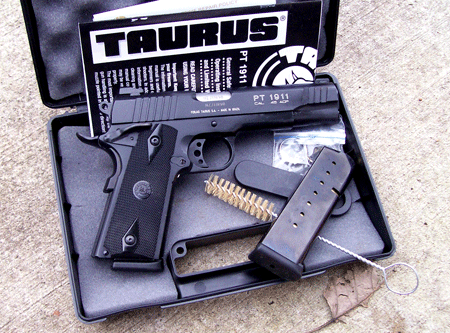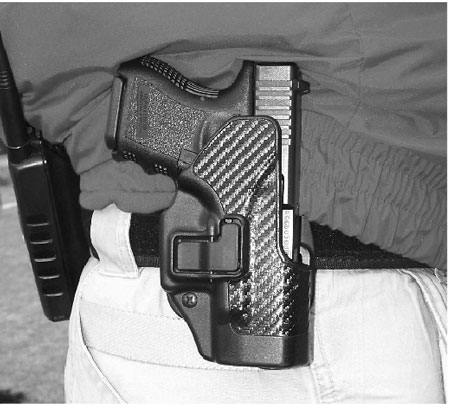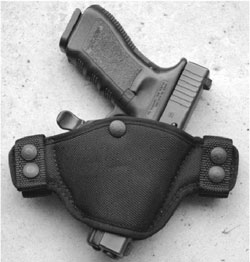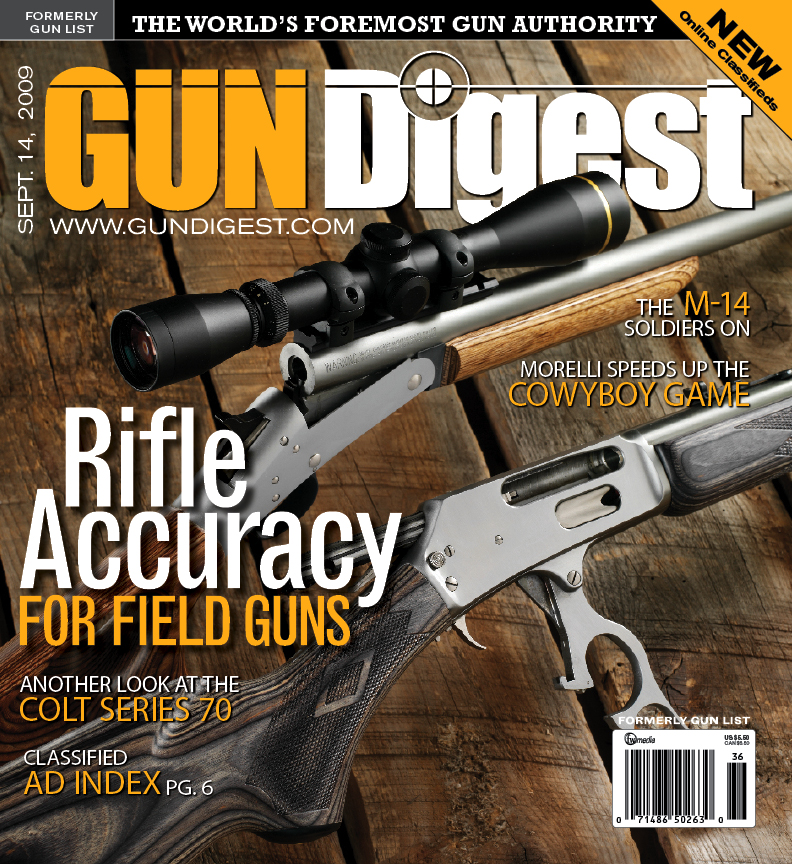
The late Dan Shideler never had much use for semi-auto pistols. Compared to revolvers, they always seemed to be clunky, awkward things. The Taurus PT 1911, however, was another matter.
I suffer from an acquired distrust of semi-auto pistols, one that undoubtedly springs from an unfortunate encounter I had some 20 years ago with an old European cavalry pistol.
It happened in the Mile Corner Gun Shop in Garrett, Indiana, a nice little place where I've spent many a delightful lunch hour. One day I dropped in and spied a weird-looking pistol sitting in one of the display cases.
The affable, unflappable proprietor, Dan Yarde, was only too happy to let me examine it: a Budapest-made Model 1907 Roth-Steyr chambered in 8mm Steyr. If you've ever seen a Model 1907, you know what an odd little duck it is. I had never seen one, which accounts for what happened next.
Being habitually cautious around unfamiliar guns, I pulled back the bolt handle to check the chamber. True to its design, the bolt stayed in the open position, held to the rear by the magazine follower. Without thinking I stuck my right pinky down into the magazine well and, sure enough, the bolt slammed shut on the tip of my finger.
Scalding tears sprang to my eyes. The pistol hung on to me with all the tenacity of a moray eel. I wanted to yell, cry, thrash around like a harpooned seal — anything to get that damned gun off me. In a heroic attempt to preserve my dignity, however, I just stood there, frozen in time and space, with the pistol dangling off my mangled fingertip and tears rolling down my cheeks.
The pain was so intense, I think I had an out-of-body experience. I noticed how funny the top of my head looked and saw myself playing in a sandbox at age three. Finally Dan Yarde spoke up. Staring at my hand, he casually said one word: “Ouch.”
Suddenly re-entering my body, I managed to hold out my wounded member and whisper hoarsely, “Would. . .would you mind. . . pulling back the bolt handle?” He did, and sticking my hand in my pocket, I bade him a rather hurried goodbye. I still have the scar. The emotional scar, that is. My finger healed long ago.
So let's just say that semi-auto pistols and I have had a checkered past. Oh, for a while there I caught the 1911 bug and bought every Colt I could find, but eventually I recovered and have remained happily bereft of 1911s ever. That is, until I found a Taurus PT 1911 in a local dealer's display case last week.
I am a big believer in Taurus. My Thunderbolt shoots as well or better than any of my original Colt Lightning Magazine Rifles ever did, and my Taurus Model 4410 .45/.410 shotshell revolver is a continual hoot. So when the Boys from Brazil came out with a 1911 that retailed — now, get this — for $459 new in the box, I had to give it a try.
I've owned a number of entry-level 1911s, and they were all based more or less on the standard 1911-A1 with no bells or whistles whatsoever. The Taurus PT 1911, however, is something altogether different. It bears Heinie Straight Eight combat sights, a skeletonized hammer and trigger, an ambidextrous safety, and two eight-round magazines complete with rubber baby buggy bumpers.
But wait! There's more! (Would you believe “But Wait! There's More!” is actually a trademarked phrase owned by the Ronco Corporation? It really is. But I digress.) The PT 1911 also has slide serrations both fore and aft, which is a real convenience for me. A decade ago I suffered an injury to my left hand, compliments of my old Mercedes 280C, and I have had difficulty racking the slides of most 1911s ever since. The PT 1911's front slide serrations give me the leverage I need, and I can cycle its action with no trouble.
Then there's the beveled magazine well, the oversized mag release button, the radiused ejection port, the flat mainspring housing and probably a dozen more nice little touches that I haven't noticed yet. And throw in a lifetime warranty. Frankly, I'm amazed at what $459 will buy these days.
Taurus claims that the PT 1911 is made entirely of forged steel, and it appears that it actually is. To me that's important. Call me prejudiced, call me dumb as a turnip, but I have had it up to here with the investment-cast and MIM (metal injection molded) parts found in many new pistols. You can wrap this “innovative” (i.e., cost-cutting) technology in all the gee-whiz marketing baloney you want, but in my mind pistols were meant to be made out of forged, milled steel. Not molded parts, not polymers. I will probably never shoot a pistol enough to break an investment-cast or MIM part, but give me one blanked out by a 40-ton forge any day.
Die-hard 1911 fans will probably be turned off by the PT 1911's integral Taurus safety lock, which is a key-activated device set into the top of the hammer. Me, I can ignore it. Others may choose to replace it with a conventional hammer, which is possible, according to what I've read. If there is one fault I can find with the PT 1911, it is its finish. Its bluing is a rather muddy matte black with enormous “Taurus” and “PT 1911” legends lasered into the sides of the slide. I have seen photos of a protoype PT 1911 in polished stainless steel and it looks quite nice, but the blued version is just plain ugly. It's no Kimber or United States Fire Arms 1911, that's for sure — at least in the looks department.
The PT 1911's owner's manual states that it is intended for use with standard .45 ACP ammo, not +P or +P+. I have no doubt that the pistol would handle hotter-than-standard ammo, but I'd install a beefier recoil spring first. A 230-grain hardball at about 850 fps is quite good enough for my purposes.
So how's the PT 1911 shoot? I got mine on the first day of an unprecedented late December/early January two-week rainy spell, so I haven't had much range time with it. (My wife frowns on my shooting centerfire pistols in the basement.) I can tell you that I managed to put all eight rounds of the first clip in a 10-inch group at 65 yards, shooting offhand from the open doorway of my garage in the middle of an Indiana monsoon. Yes, I know I'm not Jeff Cooper or Elmer Keith, but that's as good as I expect to do with any 1911, though hope is not entirely dead.
While shooting the PT 1911, I noticed that it had an unusually nice trigger pull. So I got out my old Zebco De-Liar scale and performed some highly unscientific measurements. Based on what my jerry-rigged scale tells me, my PT 1911 has a trigger pull of just under three pounds. And it's a nice, crisp pull, too, like breaking an icicle off grandma's back porch.
I have heard through the jungle telegram that Taurus may be considering bringing out the PT 1911 in a Commander-type version as well as a .38 Super chambering. If either of these rumors is true and the PT 1911's price point holds, I'll be first in line.
I'm no expert on 1911s. In fact, I'm a true-blue revolver guy. But to those of you who are 1911 experts, I respectfully suggest that you put the PT 1911 through its paces as soon as you can. You may be as pleasantly surprised as I was.






 Most firearms malfunctions can be traced back to the magazine. In our work testing firearms for Gun Digest the Magazine and Tactical Gear Magazine, CProducts magazines have consistently provided flawless feeding and function.
Most firearms malfunctions can be traced back to the magazine. In our work testing firearms for Gun Digest the Magazine and Tactical Gear Magazine, CProducts magazines have consistently provided flawless feeding and function.
![Best Concealed Carry Guns In 2025 [Field Tested] Wilson Combat EDC X9S 1](https://gundigest.com/wp-content/uploads/Wilson-Combat-EDC-X9S-1-324x160.jpg)


![Best 9mm Carbine: Affordable PCCs [Tested] Ruger Carbine Shooting](https://gundigest.com/wp-content/uploads/Ruger-Carbine-Shooting-100x70.jpg)
![Best AR-15: Top Options Available Today [Field Tested] Harrington and Richardson PSA XM177E2 feature](https://gundigest.com/wp-content/uploads/Harrington-and-Richardson-PSA-XM177E2-feature-100x70.jpg)
